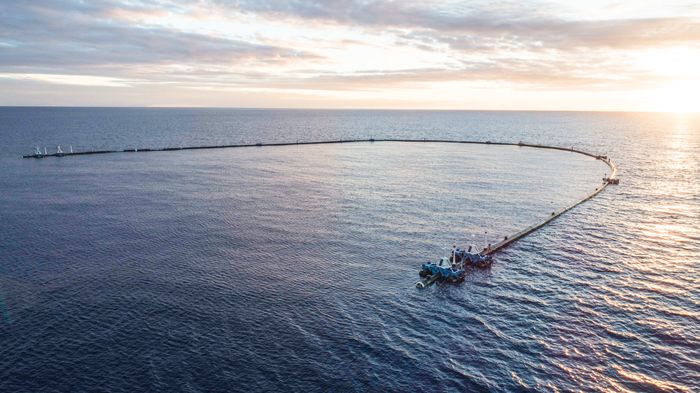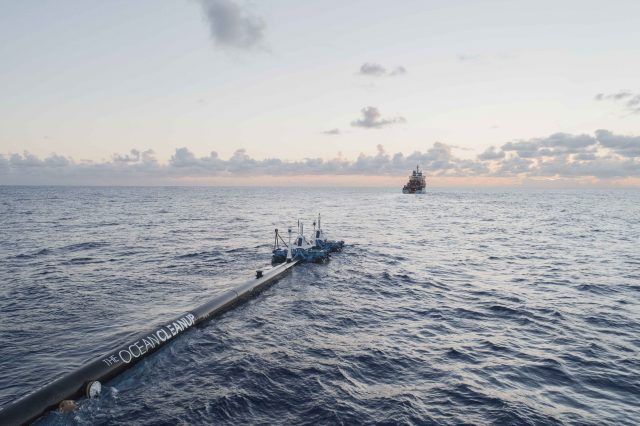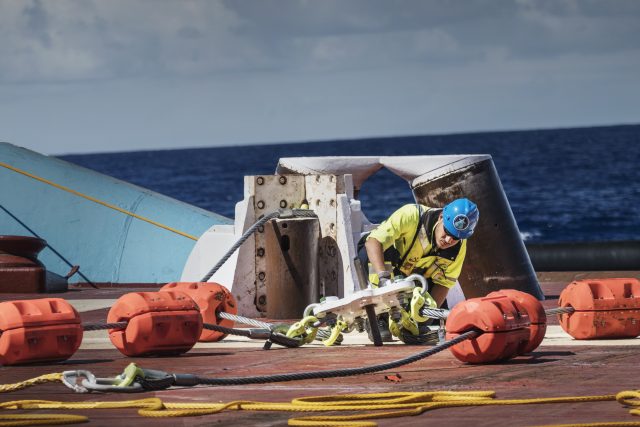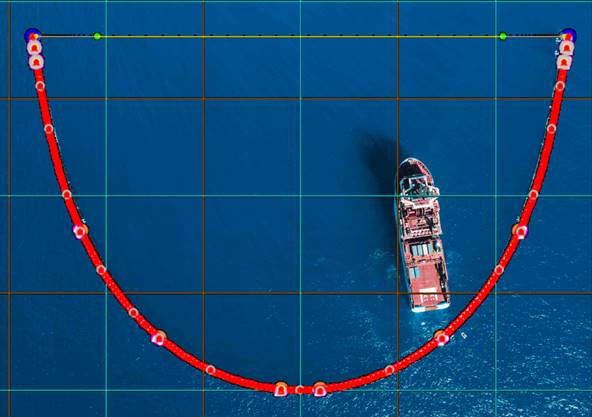
Pacific Trials – The Gateway to the Great Pacific Garbage Patch
Back to updatesFollowing the successful launch from the San Francisco Bay, System 001 traveled 350 nautical miles to commence the Pacific Trials. The trials will last approximately two weeks and are a crucial step before we take System 001 the remaining approximate 800 nautical miles to the Great Pacific Garbage Patch. Consider it a final dress rehearsal before the main performance – cleaning plastic from the ocean.

PACIFIC TRIALS OBJECTIVES
There are many tasks that must be accomplished during the Pacific Trials, but we have identified five main goals for the coming two weeks. Confirming these objectives will provide us with the understanding to know if the system is up for the challenge it’s set to face in the patch. Should we encounter any issues, it is much easier to tow the system back to shore from here than it would be all the way from the patch.
Here is the checklist System 001 needs to fulfill at the test site before it can head to the Great Pacific Garbage Patch. 1 down, 4 to go. pic.twitter.com/cYVxs9KQJR
— The Ocean Cleanup (@TheOceanCleanup) September 18, 2018
About the Checklist
-
U-shape installation
The u-shape is integral to conduct many of our tests and this will be the first time the system is ever in its intended shape. To do this, we must connect the four closing lines inside the system. -
Sufficient speed through water
We will test the system’s speed to ensure that it does move faster than the plastic. This detail is essential for capturing plastic within the system. -
Ability to reorient when wind/wave direction changes
For these tests we will tow the system in various directions against the wind (45, 90 and 180 degrees). When facing different directions, the system should reposition itself facing the plastic again. -
Effective span in steady state
The width of the system will fluctuate based on the conditions of the ocean, but it must stay in a desirable range in order for it to capture and retain plastic. -
No significant damage by the end of the test
We want to ensure the system can withstand the conditions of the ocean before we tow it all the way to the patch. We will perform checks at the end of the trials for damage. If we observe severe damage, we will then assess if this can be remedied on or offshore.
U-Shape Installation
Shortly after arrival, the system needed to be arranged in its u-shape configuration. This required connecting the closing lines. The closing lines help the system maintain its shape and prevent the system from flipping inside out.

It took approximately two days to arrange the system in its operational configuration. With the aid of the Maersk Launcher and the Megamaid, the closing lines were connected from the inside of System 001.
First Results
The installation went very smoothly, and the system seems to be behaving well so far. Configuring the system in its u-shape is the first item from our checklist that we have accomplished, and it directly matches the predicted curvature from engineering models.

Next Steps
We will maintain the u-shape for two weeks. During this time, the system will continue to undergo various additional tests. The crew has already begun testing the system’s orientation in different wind directions and aims to complete these tests tomorrow.
With one down and four to go, our goal is to achieve all five of these objectives in the next two weeks. We still have much to learn, so we are taking this time to understand as much as possible. If all items can be checked off, only then can we give the go-ahead to begin the journey to the Great Pacific Garbage Patch. Stay tuned.
